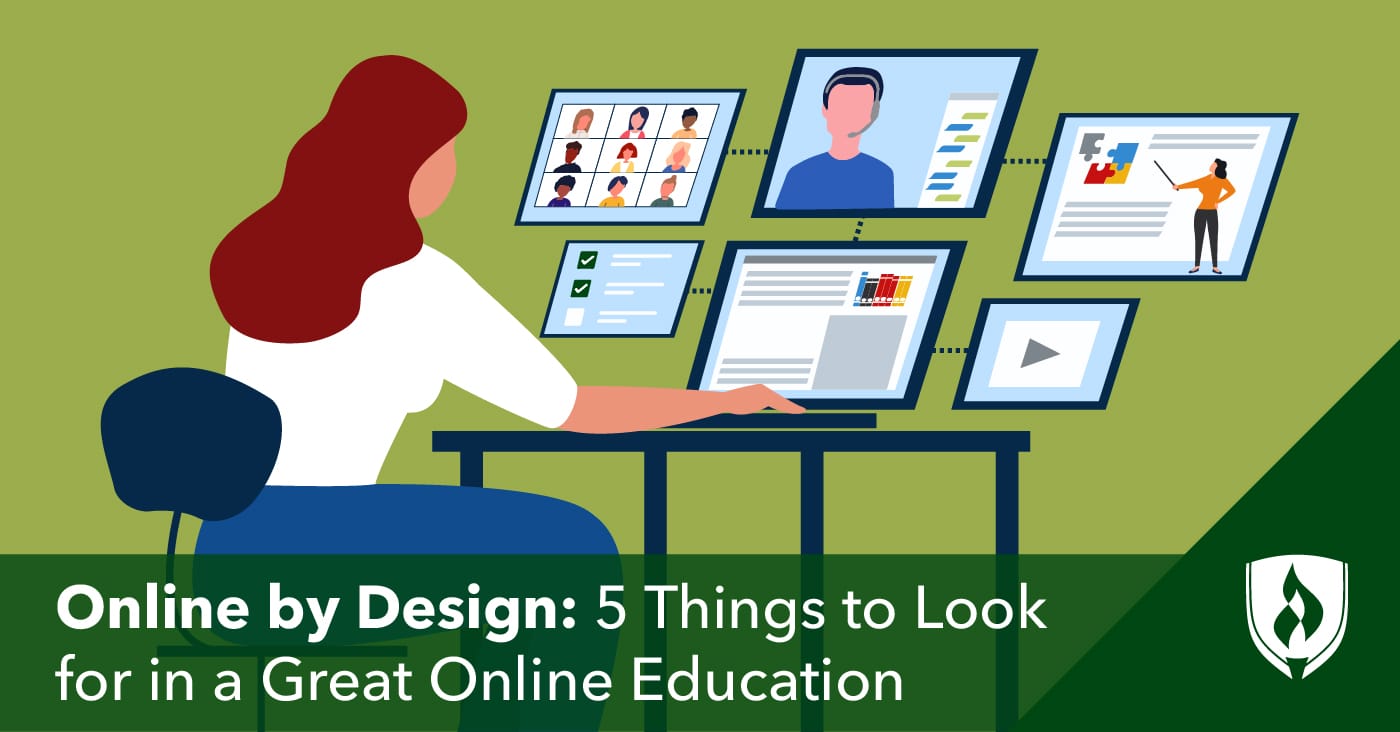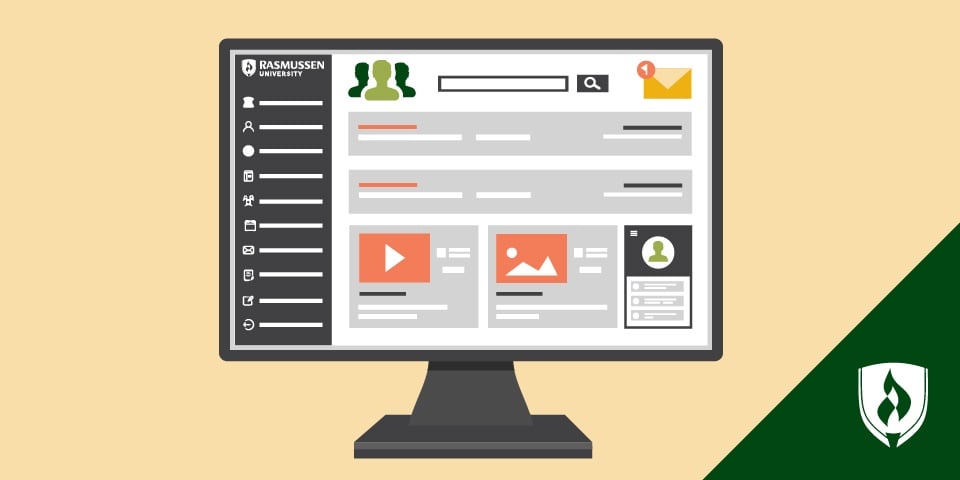
Online education has been around for a while. A lot has changed from the early years when it was considered to be just an interesting novelty option used sparingly at select colleges across the country.Today, there are thousands of students enrolled in online programs in the U.S.—and as more institutions have been forced to adjust their plans due to coronavirus-related campus closures, thousands more are joining the online classroom now or in the near future.
This rapid switch to online learning has been a tremendous undertaking for many schools. But that doesn’t mean it has been a smooth experience for everyone. Faculty with little or no online teaching experience are making the best of it as they try to convert their courses and adapt, but without the right support and infrastructure in place those efforts may fall flat.
“As some schools transition to an ‘online’ format during this COVID pandemic, it’s not really an online education—it’s really more like a distance education course where you’re taking what would otherwise be a residential classroom and putting it into a videoconference,” says Brooks Doherty, Rasmussen University Assistant Vice President of Academic Innovation. “That isn’t an indictment of those schools due to the difficult position they are in—but I don’t want that experience to be what people think of when they hear ‘online education.’”
It’s clear that not all online education experiences are going to be equal in this environment. So what does a quality online education look like? Rasmussen University has been teaching students online since 2002—and they’ve learned a lot about how to design and deliver quality online degree programs. Let’s take a closer look.
5 Elements you’ll find in a quality online education experience
What should you look for when considering an online program? Here are five takeaways to remember.
1. Courses designed specifically for online students
What may work beautifully in a traditional brick and mortar setting isn’t always going to translate when it is brought online. This came into sharp focus during the pandemic. What can be done to make sure students have a positive course experience? That’s a question academic and instructional design professionals at Rasmussen University have had at the top of their minds for years, not weeks.
Every single course offered at Rasmussen University has been crafted by a team of academic faculty, industry subject-matter experts and instructional design professionals. They know the challenges that can come with poorly designed online experiences and work hard to ensure each course hits the mark. As you might expect, a lot of thought goes into developing the foundation of an academic program—and there’s one key starting point for them all.
“When designing an academic program, you want to first build it around the skills that will put the student in the best position to flourish in the world and in the workplace,” Doherty says.
Doherty says building the right foundation of skills will put students in position for long term success. Once established, the course design team turns to identifying the best delivery methods to help students gain and sharpen those skills.
“We design at the level of the program first, and course delivery comes second,” Doherty says. “If you’ve done it right, you can design ways to deliver that information effectively no matter the modality—whether that’s competency-based education, online or in-person.”
2. The educators know their way around an online classroom
It takes skill to be an effective educator—ask any parent who has had to assist with their child’s lessons during COVID-related school closings. It takes more than just a mastery of the subject to help someone learn it. Educators need to know how to communicate effectively and use the tools and resources at their disposal well. To do that takes specific training and practical experience—something you’ll find with the Rasmussen University online faculty. In fact, several academic leaders at Rasmussen University got their start by teaching online courses and know the importance of training faculty for this format.
“There’s a lot of front-end training so new faculty know how to deliver course content in an engaging way for our students,” Doherty says.
Doherty explains that every new faculty member receives detailed training in how to best use and navigate the learning management system platform. Beyond learning the finer points of the platform, faculty are engaged in ongoing training programs that include dedicated development weeks several times per year and an annual academic symposium. These are ways for experienced faculty to pass on advice, best practices and tips for quality academic instruction in an online setting.
3. Support services tailored for online students
It’s easy to immediately think narrowly about an online education experience as just the courses themselves—but what do you do when you need academic help? Or you’re having issues with your computer? You turn to support services to help get you back on track—and that can be an issue for institutions without strong online support infrastructure.
The Rasmussen University support services team was built with online students top of mind. Online support offerings include:
- Classroom IT Support: 24/7 technical support for students and faculty.
- Career Services: Including online resume building tools, employment boards, and online job interview coaching.
- Library and Learning Services: Need help finding a source? Not sure how to format a paper? Reach out to a librarian via live chat or schedule an appointment online.
- Online tutoring: Day or night academic assistance and tutoring, including 24/7 math help, writing labs, recorded tutoring sessions and more.
These useful services aim to provide help when you need it most—with tutoring session hours skewed toward evenings and weekends to match working students’ schedules.
4. Engaging course content that facilitates human interaction
“For the uninitiated, some people think online education means no human connection, no human element, no opportunity for rich academic conversation—and that is absolutely not true,” says Doherty. “Whether you have a well-designed online experience or not, the human element has to be part of any good online or distance education arrangement. A lot of people seem to think it can’t be done, but it can be done—and it has to be done.”
“For the uninitiated, some people think online education means no human connection, no human element, no opportunity for rich academic conversation—and that is absolutely not true."
A hastily-prepared online course based on a weekly routine of logging in, reading some course materials and writing an essay about what you’ve learned simply does not cut it. A successful online learning environment features interactions, content and coursework that keep students engaged as they develop and progress. This can be accomplished in a variety of ways—video, interactive projects, simulation labs and class discussions can all help keep you coming back and engaged in the human side of learning.
Another way Rasmussen University works to keep students engaged is through assignments that apply what you’ve learned to scenarios you could easily encounter on the job. You’re not just writing papers and taking tests—you’re asked to do. These scenarios are developed by subject matter experts and instructional design professionals to provide an authentic assessment of a student’s ability to use new skills.
“For example, if you’re in a Human Resources program, instead of writing a 2-page paper about something you’ve just learned, you’ll be placed in a fictionalized business scenario where you’re an HR leader tasked with executing and communicating a human capital plan,” Doherty explains.
“This makes it so that even when we’re dealing with an unfortunate pandemic situation, we’re still bringing students and their learning into a realistic scenario to demonstrate their skills in an authentic way.”
5. Innovative learning formats
Leaders in online education know better than to rest on last year’s advances. They’re always seeking ways to improve the student experience and use technology to meet the needs of their students. One such innovation is the use of competency-based education (CBE). This learning format puts more of the focus on demonstrating what you’ve learned and less on the amount of time you’ve spent in the classroom in order to earn credit.
“Online education really broke the mold 20 years ago for geography. Competency-based education is doing the same thing for time,” Doherty says.
So how does it work? At the start of every CBE course term, students have everything they’ll need to complete their course assignments. Throughout the term there are no mandatory weekly due dates—just a final due date for completing all of the coursework at the end of the term.
“If you’re working from home and trying to teach your kids at the same time, hard weekly deadlines become very difficult,” Doherty says. “What CBE does is it allows students to set their own deadlines, which gives additional flexibility for when they complete their work.”
It’s easy to see how this can help. With CBE courses, an overwhelmingly busy week in your life doesn’t mean you’re stuck scrambling to complete an assignment—you can work ahead or make up for it later during a quieter time.
Start strong. Finish stronger.
If you had preconceived notions about what an online learning experience would be like, it’s understandable if you’ve been rethinking your college plans as the world adapts to the changes brought on by COVID-19. But are you really going to let a change of format put your life on hold? Whether you’re in middle of an academic program or just getting ready to take the first step toward a college degree, a quality online education experience is ready for you today. If you’re ready to start strong and finish stronger, request more information today to get into contact with an admissions advisor.




